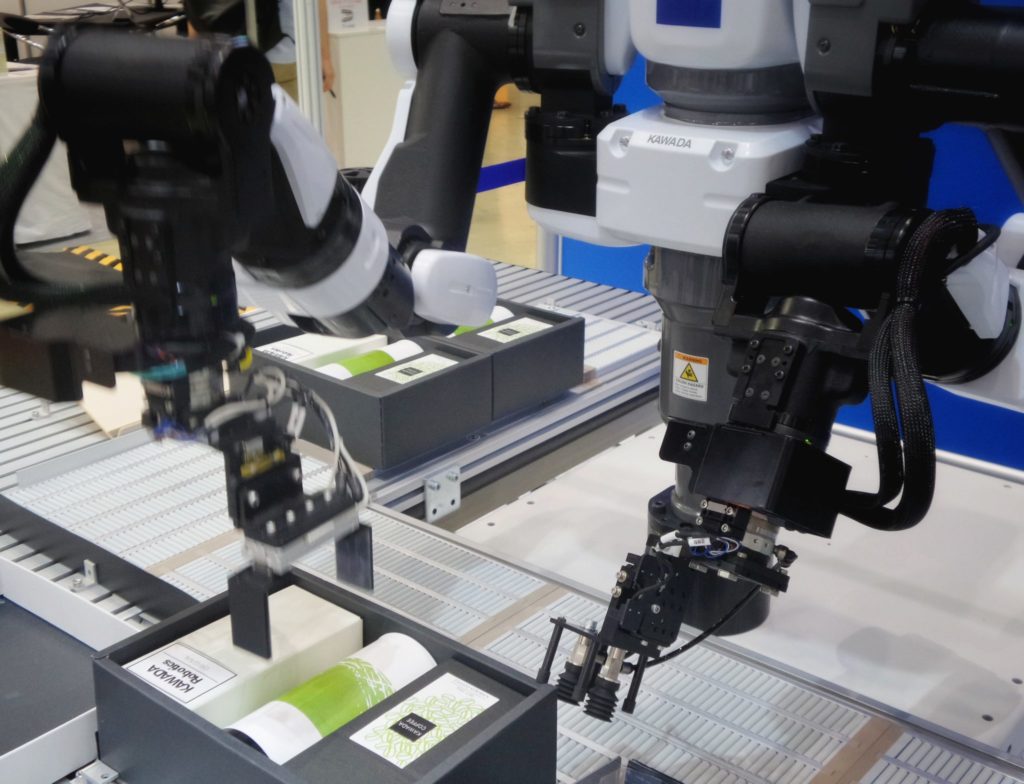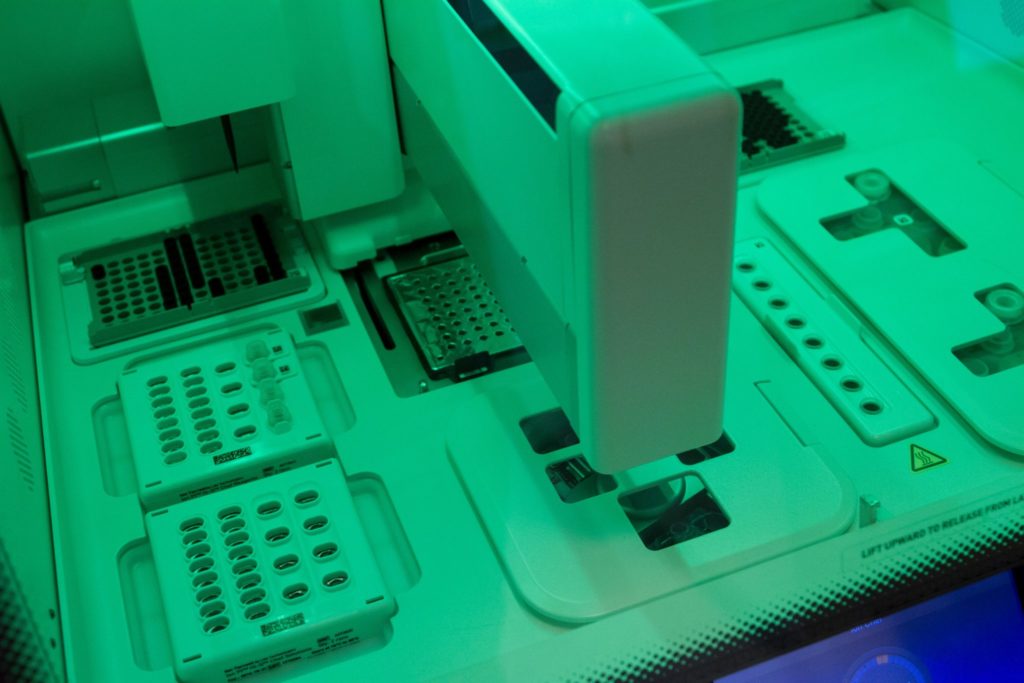Pharmacy automation has been used for decades to streamline the dispensing process in both retail and hospital pharmacies. While many are afraid of this technology and foresee a future in which robots take the place of pharmacists, pharmacy automation is, in fact, a lot less scary. More and more pharmacies are investing in automated dispensing robots and the trend is only set to grow. A recent survey shows that only about 30-40% of UK pharmacies have implemented pharmacy dispensing robots, and less than 10% are fully automated. And if you happen to be among the 60% of pharmacy owners who have not yet installed a dispensing robot in their pharmacy, you might be interested in our post today. To help you decide whether investing in pharmacy automation systems is worth your money, we put together a guide just for you.
What is pharmacy automation?
Pharmacy automation refers to the various machines and technologies used to speed up pharmacy processes. Automated robotic systems today come in a large variety of sizes and abilities. Some assist in counting pills, others package and label prescription medication, while still others can fill prescriptions in a fully automatic way. The main benefits of pharmacy automation systems reside in making the dispensing process safer, faster and more efficient. By doing that, they free up pharmacists and allow them to deal with tasks that require more human attention.

Up until recently, these automated systems have been mostly limited to big-box pharmacies, handling a large number of prescriptions monthly. But due to technical innovations, automated dispensing robots have become more powerful and a lot more affordable. Depending on each pharmacy’s needs and requirements, pharmacy owners can choose from a variety of robotic systems to help their business. These include:
- Digital counting scales. The small machines are especially useful for compounding pharmacies by increasing efficiency, accuracy and speed. Their main advantages compared to other machines is that they do not take up a lot of space, are cost-efficient and do not require frequent cleaning.
- Pill counters. Counting pills is not only labour-intensive but also time-wasting. It is one of those areas where it is very easy to make a mistake. Pill counter robots free pharmacists from the repetitive job of counting pills. At the same time, they increase the accuracy of the dispensing process.
- Cabinet dispensers are halfway between pill counters and dispensing robots. Cabinet dispensers have the added benefit of storing the medication to be dispensed, which means that they can free up space on stock shelves. However, they take up a lot more space than any other machine discussed above.
- Dispensing robots come in a variety of shapes and sizes. Depending on the model and price, they can perform various functions. From counting to labelling and dispensing medicines they can be used to fully automate the prescription dispensing process.
- Packaging robots pack the medication in blister or strip packs for a single dosage. This is especially useful for elderly people and customers who find it difficult to keep track of their medication. To ensure safety, these robots also print prescription information on the package.
Advantages and disadvantages of pharmacy automation systems
Before investing in pharmacy automation, you will probably want to consider the advantages and disadvantages of doing so. And if you are at loss as to what the pros and cons of pharmacy automation are, take a look at our list below.

+ Increase in the number of dispensed products
Automated pharmacy systems can give a significant boost to your business. Pharmacies who have benefitted from pharmacy automation report a 50% increase in their prescription volume. But even if you have fewer prescriptions to fill, you might notice a 10-15% increase in the number of dispensed products after installing the robot. This means that more time is available for compounding and offering additional healthcare services.
+ Reduce waiting times
Pharmacy dispensing robots can dispense medicine a lot faster than any human could. As a result, pharmacies fitted with such a robot could cut their average wait time significantly. This means not only that more customers can be served in less time, but it also leaves more time for pharmacists to talk to customers. Not to mention the significant increase in customer satisfaction. Who likes to wait for their prescription to be filled?
+ Free up pharmacists and technicians
One of the main reasons pharmacy owners are reluctant to invest in pharmacy automation is because they are afraid of having to lay off staff. But it does not have to lead there. Automated dispensing robots can help free up pharmacists from doing repetitive tasks. And instead, they can spend time on offering quality healthcare services that require more human attention. After all, counting and dispensing pills is not the best use of a pharmacists time. More time for private consultation and more attention to the customer leads to better customer experience and increased customer satisfaction. And ultimately, that is what keeps customers coming back.
+ Reducing medicine waste
Most dispensing robots work on a first-in, first-out basis. This means that less medicine will go out of date before it is dispensed. In turn, this will allow you to reduce the number of your stock and frees up cash flow.
– Pharmacy automation can become costly
One of the main drawbacks of pharmacy automation is that it can easily become costly. The price of an average pharmacy robot starts at £50,000 but can be as high as £500,000 for more expensive models. More modern pharmacy automation systems made purchasing a dispensing robot more cost-effective, but you must remember: they cannot completely replace pharmacists.
– High level of maintenance
Pharmacy owners often worry about the safety and accuracy with which robots can dispense medicine. And while the robots themselves are extremely reliable and safe to use, regular maintenance is a must to keep them working like a charm. At the same time, pharmacy owners need to be wary of the danger of cross-contamination. As the machines dispense various medicines, tiny traces of the medications can remain inside of the robot. For this reason, a thorough cleaning is necessary at regular intervals to avoid cross-contamination. This, in turn, means additional cost and time.
Is pharmacy automation worth your money?
Automated pharmacy systems and dispensing robots sure have many benefits. They help you speed up the dispensing process and make it safer and more accurate. But at the same time, they have one main disadvantage: cost. If you are thinking about investing in pharmacy automation, you probably want to know whether it will be worth it. So how can you decide?
To make an informed decision, you will have to consider various factors. These include the reasons for wanting a robot, your budget and the number of prescriptions you want to fill. To ensure your investment will return, you need to consider all of these aspects in turn. And if you are wondering what this means, let us show you.
- Reason for wanting a robot. Especially if you are on a tight budget, you will need to think about where a robot could help you the most. Are you thinking about pharmacy automation to reduce waiting times? Is it because you would rather focus on consultation and additional healthcare services?
- Your budget. Depending on the reasons you want to buy a robot, you will have to think about how much you want to spend on it. To ensure your investment will be worthwhile, it is essential to make sure that you buy a robot that satisfies your needs. In general, the price of the robot should return within the first three years of use.
- The number of prescriptions. The benefits you can gain from pharmacy automation will ultimately depend on the number of prescriptions you handle in a month. Ideally, you should consider investing if you handle approximately 6,000 items a month, but the greater the number the more benefits it will bring. If you have fewer prescriptions to handle, but you still feel you could benefit from pharmacy automation, do not worry. You can always opt for simpler, smaller machines to free up pharmacists from doing repetitive tasks and speed up the dispensing process.
Final verdict?
Pharmacy automation is, without doubt, the future of the pharmacy business. As a result of continued technological innovations, dispensing robots are now cheaper than ever. At the same time, manufacturers now offer a wide variety of dispensing robots for you to choose from. But this does not mean that you should go into it without thinking about it carefully first. Make sure you consider your reasons for wanting a robot and choose the one that suits your needs and budget best.
Considering investing in pharmacy automation? Working together with competent partners, our team of pharmacy shopfitters can install robotic dispensing systems for pharmacies of all sizes.

